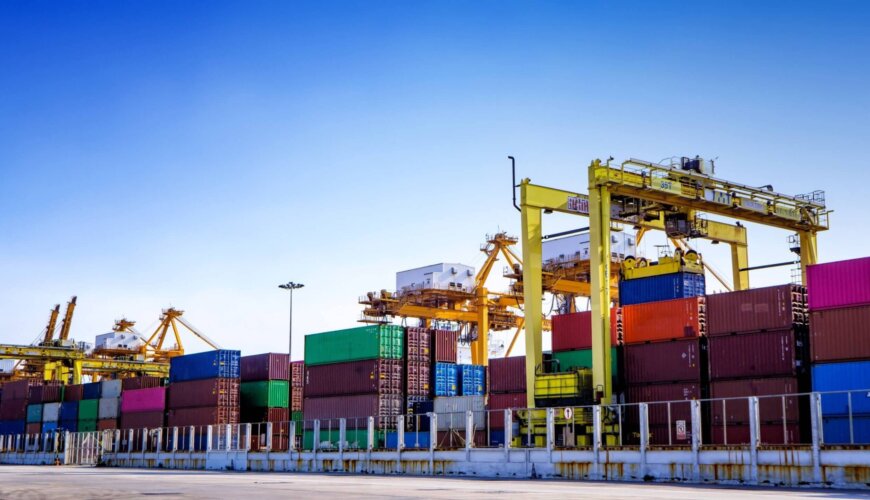
National logistics plan: what are your goals
To talk about the National Logistics Plan, which we will explain later on what it is and what its main objectives are, it is important to draw an overview of how the country's transport logistics are established, which is essential for production to be successful. stipulated and drained.
When we talk about transport logistics, we are discussing all the processes that involve this transport step. In other words, it is necessary to take into account the established procedures, which will be the modes of transport used to transport goods, costs, travel time, the structure of roads and vehicles, among other factors.
These ideas are essential for companies to be able to have their goods transported to planned destinations, either in the domestic market or to the ports that will export these items. ports que realizarão a exportação desses itens.
Currently, the most used modes of transport for these means are road and rail, and there is an important predominance of highways. In spite of that, the railroads have a fundamental role in several regions of the country, as it allows for cheaper, faster and more efficient transport. The air and pipeline modes are in the background in this balance.
For the national transport sectors to continue developing, improving their practices, improving technologies and finding important solutions for production to be able to grow together, it is essential that there are specialized spheres to know how to organize and seek these solutions.
It is in this sense that we need to talk about the National Logistics Plan, established by the federal government precisely to take care of issues like these. Here, we will explain what it is about, objectives, nuances and the future of the National Logistics Plan.
Content Index
What is the National Logistics Plan?

The National Logistics Plan (PNL) is nothing more than a plan established by the government to determine the guidelines for investments, innovations, changes and continuity in the country's logistics system, especially in relation to the modes of transport.
The PNL was developed in 2006, through an idea between the national Ministry of Transport and the Ministry of Defense for the emergence of new ideas for improvements in the Brazilian transport sector.
In this way, through constant meetings and meetings with groups involved in transport processes, such as the federal government itself, logistics companies, transport companies, unions, among others, actions for change are discussed, checking the panorama, always seeking investments for that this sector is improved, benefiting everyone involved.
What are the goals of NLP?

By understanding what the National Logistics Plan is, it becomes easier to understand and monitor what the main objectives of this plan are in recent years and in future years..
In general, the main objective of the National Logistics Plan is to provide those involved with a sufficient database so that they can adequately plan which changes must occur and which paths to follow.
In addition, there are other objectives that are established by the National Logistics Plan itself, and that are exposed for public knowledge, such as:
Among the purposes of the PNLT are:
- Establish a transport sector database;
- Constant updating of data, considering the specifics of each region;
- Logistic support in business planning;
- Cost optimization;
- Search for solutions to improve the waterway and railroad modes due to the cost-effectiveness of both;
- Concern with environmental issues in logistic intervention processes.
Sector plans and their objectives

In addition to having a concrete plan, which addresses all aspects of transport logistics, presenting ideas for changes and innovations in the sector, the plan can also be divided into sector plans, which are as follows:
- Land transport (rail and highway);
- Waterway Transport;
- Air transport;
As land transport is the one that occupies a privileged place in the most used transport chain, it ends up being the one with the greatest focus in the National Logistics Plan.
Currently, there are more than 200,000 km of highways and more than 30,000 km of railroads that need to be worked on and managed, as well as ideas for expanding the fleet and transport capacity.
In this sense, the Sectoral Plan for land transport, included in the National Logistics Plan, has certain specific objectives for these transport segments, such as:
- Develop road infrastructure;
- Work on road safety;
- Sustainability;
- Improve logistical performance;
- Technological development;
- Others.
The other sectoral plans also have similar objectives, always aiming to qualify the sectors in which they are responsible, naturally taking into account the needs and particularities of each transport mode being worked on.
National Logistics Plan 2035

Although the National Logistics Plan presents constant innovative solutions for the transport logistics sector , constant technological advances, climate change, sustainability ideas, among other issues, end up requiring that public authorities in Brazil increasingly improve their ideas to improve this sector.
It is in this sense that the National Logistics Plan 2035 (PNL 2035) emerged. Just like the traditional plan, the PNL 2035 aims to work in relation to transport logistics in Brazil.
However, this plan is considered more modern and suitable for the moment, as it aims to work on all available modes of transport, intermodality, cabotage system, among other aspects.
The idea above the name of this plan is due to the deadline for the investments to be finalized. In this sense, the planning of the plan foresees heavy investments in the national transport system until the year 2035. It is estimated that more than 400 billion reais will be invested during this period.
With the 2035 National Logistics Plan, the idea is that national transport matrices find a greater balance than what we have today. With that, investments will be divided, and not just destined en masse to the highways, as was done in past decades.
In addition, the plan also establishes parameters for both the transport of people and cargo, ensuring that both will benefit from new investments, development of transport practices and other important gains.
Conclusion
As we have seen, the National Logistics Plan is an important means that public authorities have to be able to increasingly improve the country's transport logistics. But, in addition to what has already been established, new projects are emerging so that this growth is potentialized, with new technologies, more speed and less bureaucracy for things to flow.
Searchs:
https://www.epl.gov.br/transporte-inter-regional-de-carga-no-brasil-panorama-2015
http://hidroviaveis.com.br/wp-content/uploads/2018/10/Plano-Nacional-de-Log%C3%ADstica.pdf












